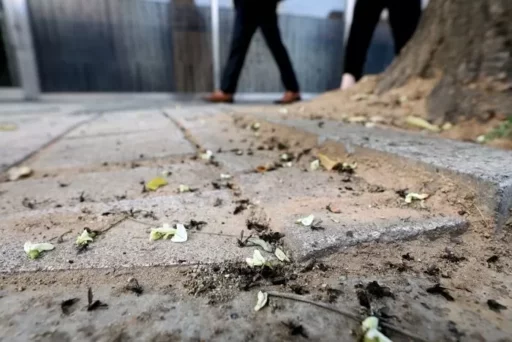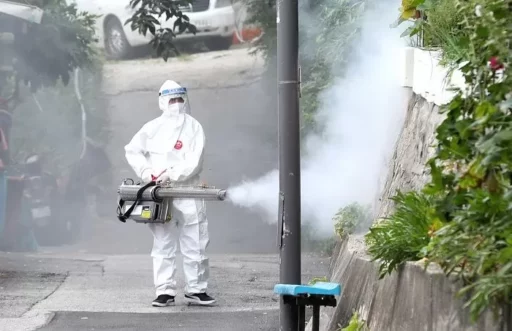Lovebug Eco-Friendly Pest Control: 'Water' More Effective than Insecticides
As early summer approaches, there are concerns that the unwelcome visitor known as the 'lovebug' will again disrupt the daily lives of citizens this year.
The lovebug, scientifically known as the red-shouldered bug, is a harmless insect that flies around in pairs. Their population surges dramatically in early summer, leading to an increase in complaints.

According to the Seoul city government, complaints related to lovebugs rose from 4,418 in 2022 to 9,296 last year, more than doubling.
Lovebugs do not carry pathogens and do not bite humans. They are beneficial insects that contribute to soil fertility and help maintain ecological balance, serving as important organisms that coexist with humans.
However, in recent years, their population has risen sharply, causing discomfort to citizens. Complaints have surged, prompting many local governments to struggle with pest control measures.

Use of Insecticides May Actually Exacerbate Lovebug Outbreaks
Experts warn that applying insecticides could have the opposite effect, potentially causing more outbreaks of lovebugs.
Insecticides can eliminate not only lovebugs but also their natural enemies, creating an environment that is more conducive to the lovebug population explosion in the long term.
Recognizing this problem, the Gwanak District of Seoul distributed educational materials on eco-friendly pest control methods that can easily be implemented in daily life on the 6th.
The methods proposed by Gwanak District include physical pest control techniques such as 'attractant light traps' and 'installation of screens,' as well as biological control methods that utilize natural predators.

The Most Effective Eco-Friendly Pest Control Method is 'Water'
According to Gwanak District, the most effective eco-friendly pest control method is the 'spraying method.' This method involves washing away lovebugs gathered on vehicles, building exteriors, and window sills using a hose or bucket of water.
This technique safely removes insects without chemical agents and is easy for anyone to practice.
The Ministry of Environment also recommends using physical methods such as tissues or brooms to remove lovebugs from indoors rather than resorting to insecticides.
Additionally, since lovebugs prefer light colors, wearing dark-colored clothing when going outside can help prevent them from sticking to the body.
Image source: Reference images to aid understanding of the article / News1


